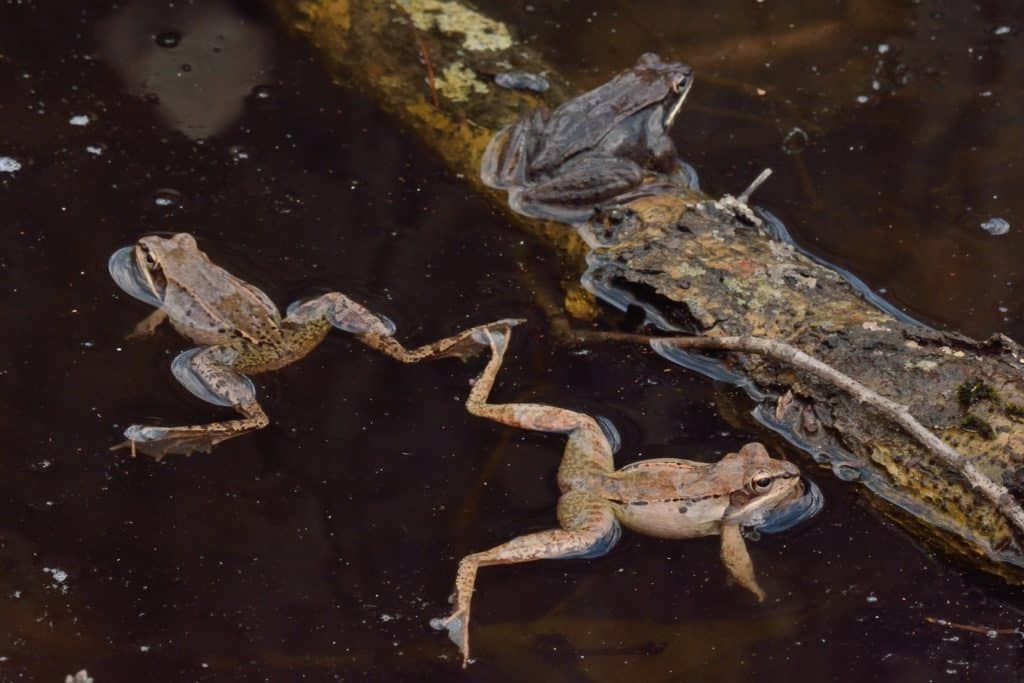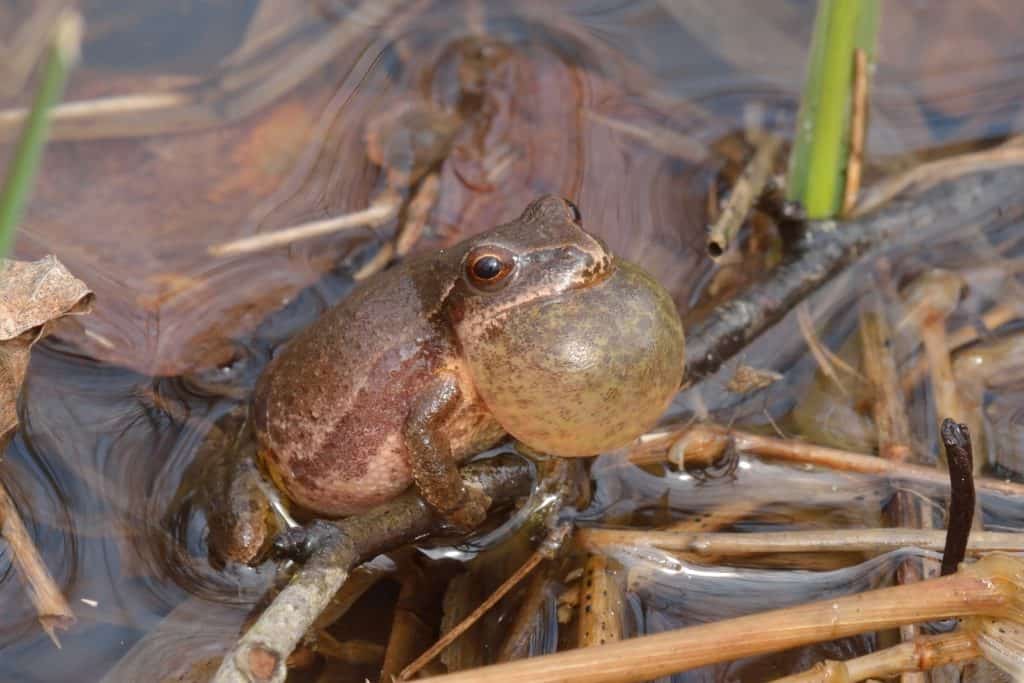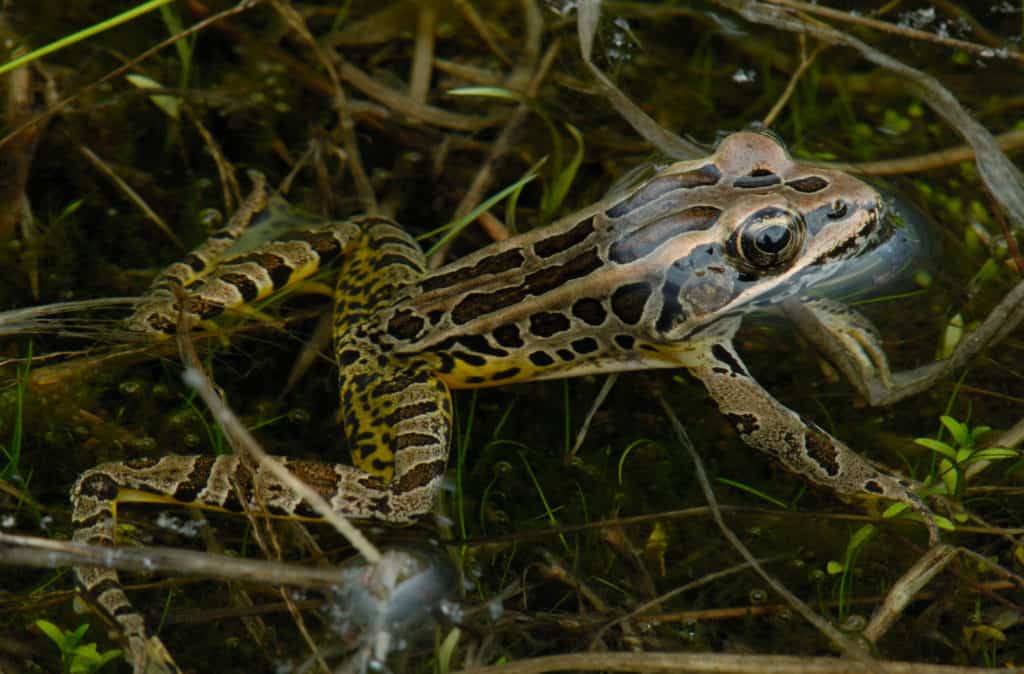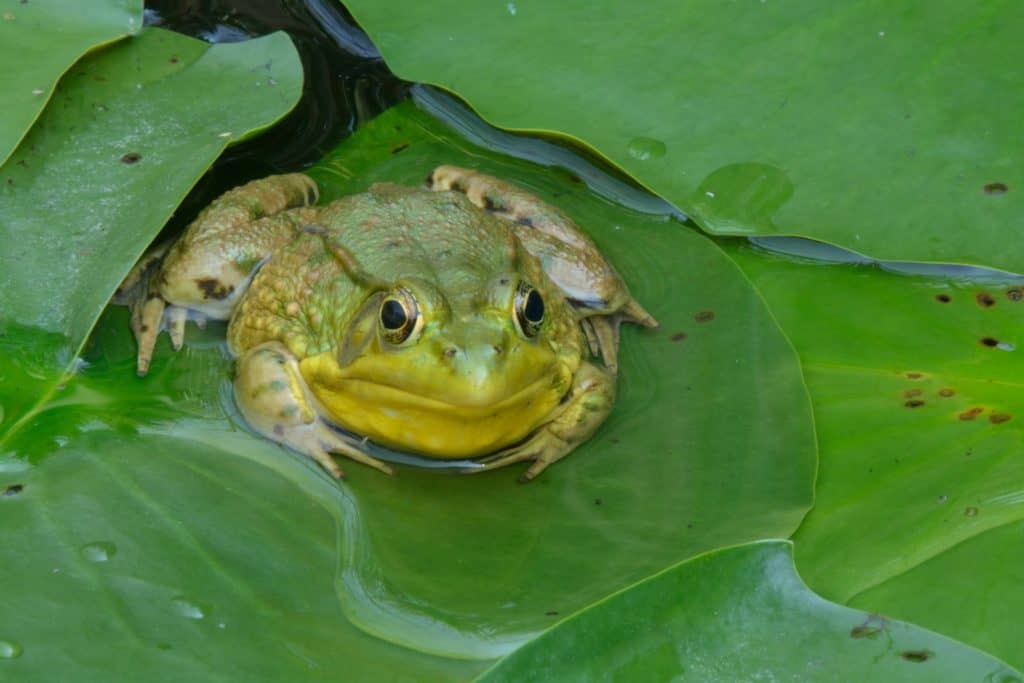un poco de agua. mucha vida silvestre.
a little water. a lot of wildlife.
If you visit the wetland areas of Hildacy Preserve (and many of our other properties) this time of year, you’ll be greeted by a chorus of sounds: peeping, quacking, purring, and trilling. These are all frogs calling for mates.
Our ephemeral wetlands are managed to support breeding habitat for amphibians that spend most of their lives in the woods and come to shallow pools in spring to mate and lay eggs. Each summer, after tagpoles have become frogs, we drain the water. This replication of a dry season prevents fish populations that would prey on frog eggs.
soak it in.
Did you know that frogs don’t drink water? Instead they absorb it through their skin. Because of their sponge-like skin, these critters can be easily poisoned by pollution. A pond or wetland full of frogs means the water is clean and healthy.
From late winter to late spring, listen for this progression of charming, noisy species (photos by Bill Moses):
 wood frog – sounds like a duck quacking |
 spring peeper – sounds like a chick peeping |
 pickerel frog – sounds like a cat purring |
 green frog – sounds like a banjo strum |
soak it in.
Did you know that frogs don’t drink water? Instead they absorb it through their skin. Because of their sponge-like skin, these critters can be easily poisoned by pollution. A pond or wetland full of frogs means the water is clean and healthy.
